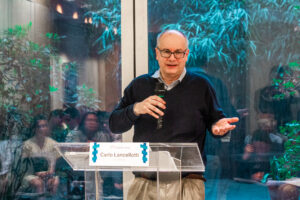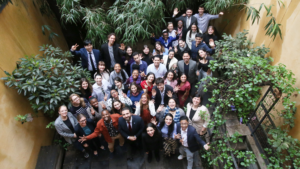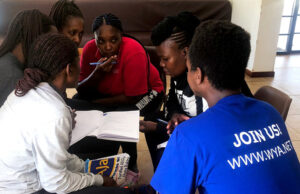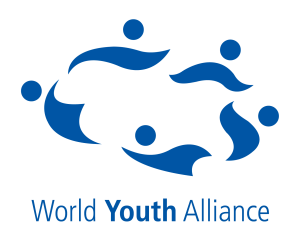This is a third in a series of “Debating Death” articles which examine ethical, political, medical, legal, social and cultural aspects of legalizing euthanasia.
Approximately two years ago, war veterans in Croatia were protesting in front of a government building. After some hours the police wanted to drive out the protesters from the square in which they’ve gathered. The things got messy and the scenario was not nice at all: the men who defended the country in the past and the ones who were defending it today were now standing against each other as enemies. At one point one of the veterans climbed to the roof of the building on the opposite side and said he would jump. Everyone was terrified.
A policeman and a priest who was among the veterans took the megaphone and started convincing him not to do it. Both sides were determined to stop him and this was something the rest of society who were watching on TV approved as necessary and heroic. After some time he was convinced and the situation calmed down.
In the previous article, I reflected on what happens to the medical profession when euthanasia becomes legalized. But, medical profession is not the only group which is affected by the legalization of the euthanasia. The whole society is.
Let us imagine what would happen with a veteran who wanted to jump off a building in a society which doesn’t necessarily think that life is valuable and should be preserved at all times, and that autonomous persons have the “right to die” or a “right to be killed” when and how they want. We could easily say that a veteran who climbed the building was clearly expressing his wish that he wants to die in that moment. He was sending a message to the world and he wanted to be heard.
Under the current state of affairs, where helping someone kill himself is punishable by criminal law and where euthanasia was not legal, the principle that life should be preserved is implicitly accepted by everyone. For this reason, all the actors in the protest were equally assured that they should try to stop the man from killing himself. And everyone who watched the situation on TV thought the same. This implicit respect for the above-mentioned principle made it possible for the heroic action to happen. For a couple of moments, police and veterans stopped being enemies and everyone joined forces to save the man’s life. And it happened: when society invested increased effort to help the man, he was saved.
Now, in a society which equally values the principle of preserving life and the principle of assisting death, there is no clear line of action in the similar situations. When the veteran climbed the building and communicated his intention to kill himself, what would be the reason for police to try to stop him? Wouldn’t it be more humane to respect a man’s autonomous decision and help him to execute it?
In this scenario it would be equally legitimate that the police asks once more (or maybe three times to be sure) does he really want to kill himself. If the answer remains yes, then police presents him different packages the State offers to meet his wish. He can have an euthanasiast coming and helping him jump, at the same time giving him morphine that the doesn’t feel pain when he hits the floor. The euthanasiast can also “finish him” if he’s not dead after jumping. If doctors try to save him if he survives the jump, the law will stop them.
Although all this seems too fantastic, it is a necessary consequence for the society which accepts two conflicting principles of preserving life and administering death. Similar situations as the one mentioned above would necessarily occur. When someone attempts suicide and survives, does the society try to help him recover or help him finish his attempt? If a depressed teenager says he wants to die, does society try to treat his depression or kill him? If someone feels like he has completed his life’s journey, do we give him the lethal injection or ask him to tell his life stories to the new generations to ennoble them? There would be countless different scenarios in which the basic moral intuitions of the society would be shattered.
Protection of the vulnerable undermined
The problem is, as newly appointed US Supreme Court Judge Gorsuch notes, in Netherlands “it is the physician’s assessment of the patient’s quality of life as ‘degrading’ or ‘deteriorating’ or ‘hopeless’ that stands as the ultimate justification for killing.” That means that person’s dignity is always evaluated by someone else and someone else will always have the power to deem his life unworthy of living.
The New York State Task Force on Life and the Law, established by Governor Mario Cuomo in 1985, explained in its report: “The Task Force members unanimously concluded that legalizing assisted suicide and euthanasia would pose profound risks to many patients… The practices will pose the greatest risks to those who are poor, elderly, members of a minority group, or without access to good medical care… The clinical safeguards that have been proposed to prevent abuse and errors would not be realized in many cases.”
In fact what usually happens is that euthanasia is advocated for in the name of personal autonomy, but in reality people often don’t make an autonomous decision to die. This is because the temptation to view elderly or disabled family members as burdens increases, as does the temptation for those family members to internalize this attitude and view themselves as burdens. Economic reasons often lead family members to persuade their elderly and sick relatives to take euthanasia. Family members with a financial or emotional incentive to see the patient die would be likely to influence his decision. As one author puts it, “More powerful guardians could shop around for a doctor who is willing to make the judgment that they are capable, acting freely, and likely to die within six months.” Different advocacy groups pushing for assisted suicide laws, like Compassion and Choices (C&C) keep a list of “friendly” doctors who declare patients qualified for assisted suicide. “If the patient’s own physician, or the next physician, discovers a disorder such as depression, the patient can simply shop around to find one who won’t care.”
Different disability groups note that “numerous studies have demonstrated that physicians underestimate the quality of life of people with disabilities compared to our own assessments.”
Oncologist Wim Distelmans killed Godelieva De Troyer, a Belgium citizen who was not terminally ill, because of “untreatable depression” in April 2012 after receiving consent from three other physicians who had no previous material involvement with her care. De Troyer’s doctor of more than 20 years had denied her request to be euthanized in September 2011. De Troyer made a 2,500 EUR donation to Life End Information Forum, an organization that Distelmans co-founded; he later carried out her request to die due to depression.
In the end, euthanasia undermines social solidarity and authentic compassion. This is well portrayed in a Red Bull movie which shows children trying to persuade their sick mother to take a lethal injection. This is especially relevant since those most affected by euthanasia are the vulnerable groups who are usually less able to exercise autonomous decisions, and they are more able to be influenced in their decision by their surroundings.
As the philosopher Onora O’Neill said, speaking at the Royal Society of Medicine in June 2010: “Support for assisted dying is based on respect for individual autonomy, yet the influence that one person can have on another makes legislation to permit assisted dying intrinsically risky.”
The arguments advocating for euthanasia are often framed in terms of money the society could save if it would allow killing of the sick and the elderly, instead of caring for them. Recently, a study was published in Canada which tried to argue that legalizing “medical assistance in dying could reduce annual health care spending across Canada by between $34.7 million and $138.8 million.” Legalizing euthanasia always sends a clear message that some groups are a burden for a society and that the society would be better off without them. This inevitably leads to the utilitarian view of human persons, which always allows the “sacrifice” of certain groups in the name of ideological or monetary goals.
So, it shouldn’t surprise us that in 2014 Lithuanian Health Minister considered euthanasia as a solution for poor people, or that Japanese finance minister said that the elderly should be allowed to “hurry up and die” to relieve pressure on the state to pay for their medical care. Baroness Warnock, a leading ethicist in the UK, in a similar manner suggested that dementia sufferers may have a “duty to die.”
It’s important to remember a great number of suicides are committed by people suffering from depression or other mental illness. Legalizing euthanasia puts them in increased danger of being killed instead of being treated and offered a second chance. It’s hard to determine their level of autonomy of choice, as well as objectively evaluate their “mental suffering.” Moreover, as the New York Task Force on Life and the Law wrote in its 1994 report,“terminally ill patients who do desire suicide or euthanasia often suffer from a treatable mental disorder, most commonly depression. When these patients receive appropriate treatment for depression, they usually abandon the wish to commit suicide.”
Since in many cases the evaluation whether the person is eligible for euthanasia is in the hands of the doctors, this will inevitably lead for the doctors to classify which lives are “worth living” and which are not. As John Finnis notes, “unless doctors are to be permitted to kill anyone and everyone who makes a ‘stable and competent’ request for death, they are going to have to proceed on a classification of lives as ‘worth living’ or ‘not worth living’. Benign as its present authors and promoters doubtless generally are, such a classification would create in our society a new structure of radical inequality, with implications of the most sinister kind.”
This is one of the reasons there is no such thing as a “right to die” recognized in the international law. On the contrary, all the international law document recognize the right to life as one of the fundamental rights of the human person. This I will examine in the next article.
Written by Hrvoje Vargić, Regional Director of WYA Europe








